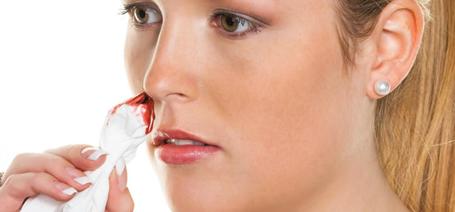|
Chillness, winter season, coldness and snow tempt most of us and people staying in such regions never feel irritated to work unless they are extremely lazy and sedentary! Each of us are born different and what suits one person might not suit some other person. People living in deserts are used to the scorching heat, individuals spending their lifetime in mountainous regions accommodate to suit those climatic conditions and so on. Whatever we do, there are certain natural qualities that can never be buried forever but only controlled as much as possible. But, everything comes with its own pros and cons. Hilly regions might trigger cold/cough frequently in people, too much heat can also trigger cold due to extreme sweat and what we can do is try to balance and stay healthy as much as possible in between all these changes. Mucus & Phlegm When I state mucus and phlegm as two different attributes, many of you would be taken aback as you have been thinking that both mean more or less the same all this while. Another surprising fact is that both of these are present in our human body all the time but only increase in quantity when some individual catches cold or is down with some allergy. Also, the main difference lies in the origin of each of the substances. While mucous comes from a person’s mucous membrane (for example, a person’s nose), phlegm comes from the back of the throat or lungs. We blow out mucous from the nose and cough out phlegm from the throat or lungs. Both, phlegm and mucus are slippery, but phlegm appears to be thicker than mucus. The critical difference is that mucous acts as the protective layer of the airways while phlegm is secreted during inflammation and diseases in the airways and contains dead bacteria, virus and other similar debris. When you catch cold, there is a buildup of mucous in your chest. There is nothing wrong about it until the mucous quantity remains normal but when there is tremendous increase in mucous quantity, it can affect quality of life and lead to complications when left untreated. Apart from cold, there are other conditions such as asthma, allergies, acid reflux, bronchitis, chronic obstructive pulmonary disease (COPD) and other lung conditions that end up in increased mucous production in the chest. Since hundreds of years, home remedies are preferred over allopathic treatment procedures to treat cold. Given below are simple tips that can be used to control mucus and feel much comfortable with yourself: Drink Liquids It is advisable to drink plenty of hot water and other soothing liquids such as hot broth, chicken soup, warm fruit juice, herbal teas and decaffeinated drinks to thin mucous and expel it by coughing. Even a 2008 study shows that drinking a hot beverage provides immediate relief from chest congestion, sneezing, continuous coughing, continuous sore throat and chills. Liquids and beverages are quite helpful in many other ways as well to promote good health, details of which are available at www.firsteatright.com. Steam Steaming is a well-practiced form of relief technique that can clear phlegm and congestion. Compared to steam, you can use a humidifier as your chances of burns are minimal here and also the humidifier can run all day long. Try using it at night as this helps to ease congestion, provide relief to nose block and helps you sleep through the night peacefully. Gargling An often-practiced technique, gargling involves mixing a small quantity of salt and warm water to remove phlegm and mucous from the throat. Add a teaspoon of salt to a glass of hot water and stir it until it gets dissolved. Gargle your mouth with this liquid and allow the salt water to stay in your throat. Repeat this as many times as you want. Consume soothing foods Try eating foods and drinks that contain ginger, garlic and lemon which are recommended by our grandmothers although there is no substantial evidence backing this. Spicy foods such chili peppers and other foods such as pomegranate, guava tea, berries, oral zinc and licorice root have evidences backing their effectiveness in treating respiratory diseases. Eucalyptus oil Eucalyptus oil loosens mucous and also helps to relieve cough. Either inhale directly from the balm or from the inhaler Certain medications When none of these home remedies seem to work, you might visit a physician who prescribes decongestants that can help to reduce nose swelling and open the breathing passage. Nasal sprays provide relief and help a person sleep better. You can also use Vicks VapoRub or other similar ones that can ease cough and get rid of mucus. Keep your kids away from these products as applying them onto their chest can cause irritation. There are baby-based products similar to the regular Vicks which can be conveniently used. Keep your head elevated Rather than lying down on the bed try elevating your head using extra pillows that minimizes coughing and discomfort. Rest Get plenty of rest and drink some hot beverage once a while to relieve yourself from chest congestion. Phlegm can be of different colors although we usually see yellow-colored ones indicating that the body is fighting against infection. The color changes depending on the severity of the illness. Different reasons for different colored phlegm include:  Blood in Phlegm is an Indication to Visit the Doctor Immediately Blood in Phlegm is an Indication to Visit the Doctor Immediately Green or yellow phlegm: Bronchitis, pneumonia, sinusitis and cystic fibrosis release green or yellow-colored phlegm. Brown phlegm: Bacterial bronchitis, bacterial pneumonia, cystic fibrosis and lung abscess produce rustic brown phlegm. White phlegm: Very commonly noticed, white phlegm is caused due to viral bronchitis, GERD, COPD and congestive heart failure Black phlegm: This color occurs predominantly due to smoking, pneumoconiosis and some fungal infection Clear phlegm: This might be due to allergic rhinitis, viral bronchitis and viral pneumonia Red or pink phlegm: Pneumonia, tuberculosis, congestive heart failure, pulmonary embolism and lung cancer can cause red/pink-colored phlegm Phlegm/mucous is normal and you must start worrying only when there is a change in color, consistency or volume. It becomes necessary to visit a doctor only when there is excess mucous in the chest for more than 3 days continuously, color of the mucous is green or yellow and congestion gets worse suddenly or when chest congestion is present along with breathing difficulties, chest pain, blood, fever or wheezing. Comments are closed.
|
AVOID FRAUD. EAT SMART.+91 7846 800 800
AuthorDietitian & Nutritionist Dr. Nafeesa Imteyaz. Archives
November 2022
Categories
All
Dr. Nafeesa's Blog @blogspot |
- Home
- Written Testimonials
- Consult
- Clinics
- Blogs
-
Diet & Nutrition
- Diabetes Reversal
- IVF IUI not needed for PCOS PCOD Infertility
-
Medical Nutrition
>
-
Disease & Conditions
>
- Infertility | PCOS
- Diabetes Mellitus
- Cholesterol
- Hypothyroid
- Kidney Problems
- Hypertension
- Cardiovascular Diseases
- Liver Diseases
- Gastro intestinal disorder
- Cancer
- Metabolic Disorders
- Orthopedic Disorders
- Eating Disorders
- Dietary Recall
- Weight Record Filled By Clients
- Online Payment Transaction Details
- Online Clients Weight Check Form
- Our Program Package Service Charges
- Weight Record 2017 Clients
- Measurements sent by Clients
- Terms & Conditions Of Payment
- Thanks. Your Form is Submitted
- Video Testimonials
- Lifestyle & Wellness
- Lifestyle & Wellness Blog
- Allergy & Intolerance
- Weight Loss / Gain
- Weight Loss / Slimming Blog
-
Disease & Conditions
>
- Life Cycle Nutrition >
- Sports Nutrition >
- Integrity in Nutrition
- Knowledge Centre
© COPYRIGHT 2022. ALL RIGHTS RESERVED. FRST HEALTHCARE PVT LTD.
Dr. Nafeesa Imteyaz of First Eat Right clinic, is the Best Dietitian Nutritionist in Bangalore. Best Dietitian Nutritionist in Pune. Best Dietitian Nutritionist in Hyderabad. Best Dietitian Nutritionist in Chennai. Best Dietitian Nutritionist in Mumbai. Best Dietitian Nutritionist in Delhi. Best Dietitian Nutritionist in Kolkata.


